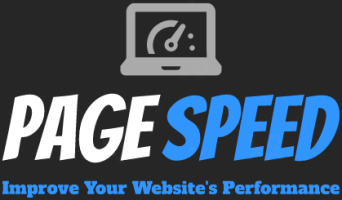In today’s fast-paced digital world, having a fast website is crucial for success. Page speed is the amount of time it takes for a webpage to load completely, and it is a critical factor in user experience and search engine optimization.
Slow-loading websites lead to higher bounce rates, lower user engagement, and decreased conversion rates.
In this article, we will discuss page speed in depth, including its importance, how to measure it, and what steps you can take to improve it.
Why is Page Speed Important?
Page speed is important for several reasons, including:
- User Experience: One of the most significant reasons why page speed is crucial is its impact on user experience. A fast-loading website keeps users engaged and satisfied, leading to a lower bounce rate and higher conversion rates. In contrast, a slow-loading website leads to user frustration, resulting in a higher bounce rate and lower conversion rates.
- Search Engine Optimization (SEO): Page speed is also an essential factor in SEO. Google has stated that page speed is one of the factors used to determine website ranking. Fast-loading websites tend to rank higher in search results, leading to increased visibility and traffic.
- Mobile Experience: With the rise of mobile devices, page speed has become even more critical. Mobile devices often have slower internet connections than desktop devices, and users expect fast-loading websites. Therefore, having a fast-loading website is essential for providing a seamless mobile experience.
How to Measure Page Speed:
Before you can improve your website’s page speed, you need to measure it. There are several tools available that can help you measure your website’s speed, including:
- Google PageSpeed Insights: Google PageSpeed Insights is a free tool that analyzes your website’s page speed and provides suggestions for improvement. It uses a scale from 0 to 100 to rate your website’s performance, with a score of 90 or above indicating a fast website.
- GTmetrix: GTmetrix is another tool that analyzes your website’s speed and provides suggestions for improvement. It provides a detailed report that includes information about speed, page size, and other factors that affect website performance.
- Pingdom: Pingdom is a tool that measures your website’s speed and provides a detailed report that includes information about page size, load time, and other factors that affect website performance.
These tools are useful for measuring your website’s page speed and identifying areas for improvement. Once you have measured your website’s speed, you can take steps to improve it.
How to Improve Page Speed (10 Tips):
There are several steps you can take to improve your website’s page speed, including:
- Reduce Image Size: Images are often the biggest contributor to slow-loading websites. Therefore, reducing image size is an essential step in improving page speed. You can reduce image size by compressing images or using smaller image sizes.
- Minimize HTTP Requests: Every time a browser requests a file from your website, it creates an HTTP request. Minimizing the number of HTTP requests is an effective way to improve speed. You can minimize HTTP requests by reducing the number of files on your website, combining CSS and JavaScript files, and using browser caching.
- Use a Content Delivery Network (CDN): A CDN is a network of servers that are distributed around the world. When a user requests a file from your website, the CDN serves the file from the server that is closest to the user. Using a CDN can significantly improve speed by reducing the distance that files need to travel.
- Optimize Code: Optimizing your website’s code is another effective way to improve speed. You can optimize code by removing unnecessary code, reducing file size, and using efficient code.
- Use a Fast Web Hosting Service: Your web hosting service can also have a significant impact on your website’s speed. If your website is hosted on a slow server, it will take longer to load. Therefore, using a faster web hosting service can improve page speed. Avoid this problem with DataPacket!
- Minimize Redirects: Redirects are another factor that can contribute to slow-loading websites. Every time a user is redirected to a new page, it creates an additional HTTP request, which can slow down page speed. Therefore, minimizing redirects is an essential step in improving speed.
- Use Lazy Loading: Lazy loading is a technique that delays the loading of non-critical resources, such as images and videos, until they are needed. This can significantly improve speed by reducing the amount of time it takes for a page to load.
- Use a Faster Content Management System (CMS): If your website is built on a content management system, using a faster CMS can also improve speed. You can research CMS options that prioritize speed and performance.
- Eliminate Render-Blocking Resources: Render-blocking resources are resources, such as CSS and JavaScript, that prevent a page from loading until they are fully loaded. Eliminating render-blocking resources is an effective way to improve page speed.
- Use Browser Caching: Browser caching allows browsers to store resources, such as images and CSS files, locally. This can significantly improve speed by reducing the amount of time it takes to load resources.
Conclusion
Page speed is a critical factor in website performance, user experience, and search engine optimization. A slow-loading website can lead to higher bounce rates, lower user engagement, and decreased conversion rates.
Therefore, measuring and improving page speed should be a priority for website owners. By using the tips in this article you can improve your website’s page speed and provide a better user experience for your visitors.

